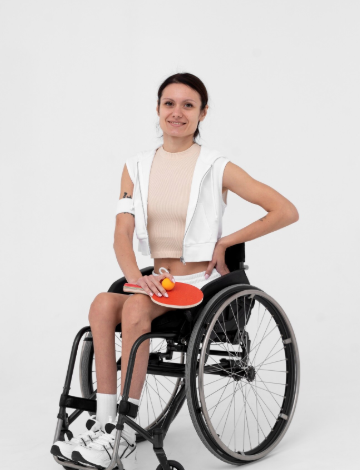Understanding Muscular Dystrophy: Causes, Symptoms, and When to See a Neurologist

Understanding Muscular Dystrophy
What Is Muscular Dystrophy?
Okay, so what exactly is muscular dystrophy? Well, it’s not just one thing. It’s actually a group of genetic diseases. These diseases cause progressive weakness and loss of muscle mass. Think of it as a family of conditions that all attack your muscles in different ways. It’s a tough thing to deal with, and understanding what it is can be the first step in managing it.
Types Of Muscular Dystrophy
There are a bunch of different types of muscular dystrophy, and each one has its own quirks. Here’s a quick rundown of some of the more common ones:
- Duchenne Muscular Dystrophy (DMD): This is probably the most well-known type. It mainly affects boys and symptoms usually show up pretty early in childhood.
- Becker Muscular Dystrophy (BMD): Similar to DMD, but usually milder and progresses more slowly. Symptoms might not show up until the teens or even later.
- Myotonic Dystrophy: This one is the most common form in adults. A key feature is trouble relaxing your muscles after you use them.
- Congenital Muscular Dystrophies (CMD): These are present from birth or show up very early in life. They cause general muscle weakness and can affect joints and the spine.
Each type has different genes involved and affects the body in slightly different ways. It’s important to know which type someone has to understand how it might progress and what treatments might help.
How Muscular Dystrophy Affects The Body
Muscular dystrophy doesn’t just weaken your muscles; it can have a ripple effect on other parts of your body too. Because muscles are involved in so many things, when they start to weaken, it can cause a whole host of problems. Here are some of the ways muscular dystrophy can impact the body:
- Mobility: Muscle weakness can make it hard to walk, run, or even just move around. This can lead to needing mobility aids like wheelchairs or walkers.
- Breathing: Some types of muscular dystrophy affect the muscles used for breathing. This can make it hard to breathe and might require the use of ventilators.
- Heart: The heart is a muscle too, and some forms of muscular dystrophy can weaken it. This can lead to heart problems like cardiomyopathy.
- Swallowing: Weak muscles in the throat can make it hard to swallow, which can lead to choking or aspiration.
It’s important to remember that everyone experiences muscular dystrophy differently. The severity and progression of symptoms can vary a lot depending on the type of muscular dystrophy and the individual. Regular check-ups with a healthcare team are key to managing the condition and addressing any new issues that come up.
Symptoms Of Muscular Dystrophy
Common Signs Of Muscular Dystrophy
So, what does muscular dystrophy actually look like? Well, it’s not a one-size-fits-all kind of thing. The symptoms can be super different depending on the specific type of muscular dystrophy a person has. But, generally speaking, the big one is muscle weakness. It’s not just feeling a little tired after a workout; it’s a persistent and progressive weakening of the muscles.
Here’s a few things you might notice:
- Frequent falls. Like, way more than your average clumsy day.
- Trouble running or jumping. Kids might struggle to keep up with their friends.
- A waddling gait. It’s kind of like a duck walk, but not on purpose.
- Large calf muscles. This might seem like a good thing, but it’s often because the muscle tissue is being replaced by fat and connective tissue (pseudohypertrophy).
- Learning disabilities. Some types of muscular dystrophy can affect cognitive function.
Progression Of Muscular Dystrophy Symptoms
Okay, so you know the initial signs, but what happens over time? Sadly, muscular dystrophy is progressive, meaning the symptoms tend to get worse. The speed of progression varies a lot. Some people might experience a slow decline over decades, while others might see more rapid changes.
Here’s a general idea of how things can progress:
- Muscle weakness spreads. It might start in the legs and then move to the arms, or vice versa.
- Mobility becomes more difficult. Walking, climbing stairs, and even standing up can become a challenge.
- Contractures can develop. This is when the muscles and tendons shorten, limiting range of motion.
- Breathing problems can arise. The muscles used for breathing can weaken, leading to respiratory issues.
- Scoliosis is possible. Weakness in the back muscles can cause the spine to curve.
It’s important to remember that everyone experiences muscular dystrophy differently. There’s no set timeline, and the severity of symptoms can vary widely. Regular monitoring by a medical professional is key to managing the condition and adapting to changes.
When To Seek Medical Attention For Muscular Dystrophy
So, when should you actually see a doctor? If you or someone you know is experiencing unexplained muscle weakness, especially if it’s accompanied by other symptoms like frequent falls or difficulty with movement, it’s time to get it checked out. Early diagnosis is super important because it can help with managing the condition and slowing down the progression of symptoms. Don’t wait until things get really bad. A doctor can run tests to figure out what’s going on and recommend the best course of action. It’s always better to be safe than sorry, especially when it comes to something as serious as muscular dystrophy.
Causes Of Muscular Dystrophy
Genetic Basis Of Muscular Dystrophy
Muscular dystrophy isn’t something you catch; it’s all about your genes. It stems from mutations in the genes responsible for healthy muscle structure and function. These mutations mess with how your body maintains your muscles, leading to progressive weakness. Think of it like a blueprint for a building – if there’s a mistake in the plan, the building won’t stand up correctly. That’s kind of what happens with your muscles when these genes have issues.
Inheritance Patterns Of Muscular Dystrophy
In most cases, muscular dystrophy is passed down from parents to their children. It’s like inheriting your mom’s eyes or your dad’s height, but instead, it’s a gene mutation that affects your muscles. There are a few different ways this can happen, depending on the specific type of muscular dystrophy:
- Autosomal dominant: Only one parent needs to have the gene for you to inherit it.
- Autosomal recessive: Both parents need to carry the gene, even if they don’t have the condition themselves.
- X-linked recessive: This mainly affects males, as the gene is on the X chromosome. Females can be carriers without showing symptoms.
Role Of Gene Mutations In Muscular Dystrophy
Gene mutations are the main culprits behind muscular dystrophy. These mutations disrupt the production of proteins needed for muscle health. Without these proteins, muscles weaken and waste away over time. There are many different genes that can be affected, which is why there are so many different types of muscular dystrophy. It’s a complex situation, but understanding the role of these gene mutations is key to understanding the disease.
It’s important to remember that while genetics play a huge role, muscular dystrophy isn’t always inherited. Sometimes, a new gene mutation can occur spontaneously. This means that even if there’s no family history of the condition, someone can still develop it. It’s a reminder that our bodies are complex, and sometimes things just happen.
Diagnosing Muscular Dystrophy
So, you suspect muscular dystrophy? Figuring out what’s going on involves a few steps. It’s not always a quick process, but getting a diagnosis is super important for managing the condition.
Initial Assessment For Muscular Dystrophy
First up, there’s the initial assessment. This usually starts with a visit to your doctor. They’ll ask about your family history, any symptoms you’ve noticed, and do a physical exam. They’re looking for things like muscle weakness, how your reflexes are, and your coordination. This initial check is key to figuring out if further testing is needed. It’s pretty standard stuff, but it gives the doctor a good starting point.
Diagnostic Tests For Muscular Dystrophy
If the doctor thinks it could be muscular dystrophy, they’ll order some tests. Here are a few common ones:
- Creatine Kinase (CK) Blood Test: This checks for muscle damage. High levels of CK can mean there’s something going on with your muscles.
- Genetic Testing: This is where they look at your genes to see if there are any mutations linked to muscular dystrophy. It can help pinpoint the specific type.
- Muscle Biopsy: They take a small piece of muscle tissue and look at it under a microscope. This can show changes in the muscle cells.
- Electromyography (EMG): This test measures the electrical activity in your muscles. It can help tell if muscle weakness is due to a muscle problem or a nerve problem.
Interpreting Muscular Dystrophy Test Results
Okay, so you’ve done the tests. Now what? Interpreting the results can be a bit tricky. It’s not always a clear-cut answer. Sometimes, the results point directly to a specific type of muscular dystrophy. Other times, it might take a bit more digging to rule out other conditions. Your doctor will look at all the test results together, along with your symptoms and medical history, to make a diagnosis. It’s a process, but it’s all about getting the right answer so you can start managing the condition effectively.
Getting a diagnosis can feel like a long road, but it’s a really important step. Once you know what you’re dealing with, you can start to figure out the best way to manage it and live your life to the fullest. Don’t be afraid to ask questions and be your own advocate throughout the process.
Managing Muscular Dystrophy
Current Treatment Approaches For Muscular Dystrophy
So, there’s no cure for muscular dystrophy yet, which is a bummer. But, the good news is that there are ways to manage the symptoms and make life a bit easier. The main goal is to keep you as active and comfortable as possible. This usually involves a team of doctors and therapists working together.
- Physical therapy to help with muscle strength and flexibility.
- Occupational therapy to learn new ways to do everyday tasks.
- Speech therapy if the muscles in your face and neck are affected.
It’s all about finding the right combination of treatments that work for you. What helps one person might not be the best for someone else, so it’s a bit of trial and error. Don’t be afraid to speak up and tell your healthcare team what’s working and what’s not.
Therapies And Support For Muscular Dystrophy
Beyond the usual medical stuff, there are other therapies that can make a big difference. Things like:
- Respiratory support: Some people might need help with breathing, especially at night. This could involve using a ventilator or other breathing devices.
- Nutritional support: Eating well is super important, but it can be tough if you have trouble swallowing or digesting food. A dietitian can help you create a meal plan that works for you.
- Assistive devices: Wheelchairs, braces, and other gadgets can help you get around and do things more easily.
And don’t forget about the emotional side of things. Dealing with muscular dystrophy can be tough on your mental health, so it’s important to have a good support system. This could include family, friends, support groups, or a therapist.
Living With Muscular Dystrophy
Okay, so living with muscular dystrophy isn’t always a walk in the park, but it’s totally possible to have a good quality of life. It’s all about adapting and finding new ways to do things. Here are a few tips:
- Stay active: Even if it’s just gentle exercises, keeping your muscles moving can help slow down the progression of the disease.
- Eat well: A healthy diet can give you more energy and help you stay strong.
- Get enough rest: Fatigue is a common symptom of muscular dystrophy, so make sure you’re getting enough sleep.
And most importantly, don’t be afraid to ask for help when you need it. There are lots of people who care about you and want to support you. Remember, you’re not alone in this!
When To See A Neurologist For Muscular Dystrophy
Recognizing Early Signs Of Muscular Dystrophy
Catching muscular dystrophy early can make a big difference in managing the condition. It’s not always obvious, but there are some signs to watch out for. If you notice a child is consistently falling more than other kids their age, or if they’re having trouble keeping up with peers during physical activities, it might be worth looking into. Muscle weakness is a key indicator, and it can show up in different ways, like difficulty climbing stairs or getting up from a seated position. Sometimes, kids might start walking on their toes because of tight calf muscles. These things alone might not mean much, but if you see a few of them together, it’s a good idea to talk to a doctor.
Importance Of Neurological Evaluation For Muscular Dystrophy
A neurologist plays a vital role in diagnosing and managing muscular dystrophy. They’re the experts when it comes to nerve and muscle disorders. A neurological evaluation involves a thorough examination of muscle strength, reflexes, and coordination. The neurologist will also review your medical history and ask about any family history of muscular dystrophy or related conditions. They might order tests like an EMG (electromyography) to measure the electrical activity of muscles, or a muscle biopsy to examine muscle tissue under a microscope. Genetic testing is also common to identify specific gene mutations associated with different types of muscular dystrophy. All this information helps the neurologist make an accurate diagnosis and develop a treatment plan.
Ongoing Care For Muscular Dystrophy Patients
Living with muscular dystrophy requires ongoing care and support. It’s not just about seeing a neurologist; it’s about building a team of healthcare professionals who can address the various aspects of the condition. This team might include physical therapists to help maintain muscle strength and mobility, occupational therapists to assist with daily living activities, speech therapists to address swallowing and communication difficulties, and respiratory therapists to manage breathing problems. Regular check-ups with the neurologist are essential to monitor the progression of the disease and adjust treatment plans as needed. Sometimes, people with muscular dystrophy also experience other health issues, like heart problems or migraines. It’s important to address these issues promptly to maintain overall health and well-being.
Managing muscular dystrophy is a marathon, not a sprint. It requires a proactive approach, a strong support system, and a commitment to ongoing care. While there’s no cure for muscular dystrophy, early diagnosis and comprehensive management can significantly improve quality of life and help individuals live as fully as possible.
Here’s a simple table showing the frequency of visits to different specialists:
| Specialist | Frequency |
| Neurologist | Every 3-6 months |
| Physical Therapist | Weekly/Bi-weekly |
| Respiratory Therapist | As needed |
Frequently Asked Questions
What exactly is muscular dystrophy?
Muscular dystrophy is a group of over 30 different conditions that are passed down through families. These conditions cause muscles to get weaker over time. The main problem is that the body can’t make or fix the proteins needed for healthy muscles.
Are all types of muscular dystrophy the same?
There are many kinds of muscular dystrophy, and they affect people differently. Some types show up when a person is very young, while others might not appear until adulthood. The specific muscles affected and how quickly the condition gets worse can vary a lot from one type to another.
What causes muscular dystrophy?
Muscular dystrophy is caused by changes, or mutations, in certain genes. These genes are like instruction manuals for building and maintaining muscles. When there’s a mistake in these instructions, the muscles don’t work right and start to break down.
What are the usual signs of muscular dystrophy?
The most common signs include muscles getting weaker, trouble with movement, and sometimes issues with balance or coordination. These problems usually get worse over time, making everyday activities harder.
How do doctors diagnose muscular dystrophy?
Doctors use a few different methods to figure out if someone has muscular dystrophy. This can include checking your muscles and nerves, taking blood tests, looking at a small piece of muscle under a microscope, and doing genetic tests to find specific gene changes.
When should I see a doctor about muscular dystrophy concerns?
If you notice muscle weakness, difficulty moving, or other unusual physical changes, especially if they seem to be getting worse, it’s a good idea to talk to your doctor. They might suggest seeing a neurologist, who is a specialist in brain and nerve problems, to get a proper check-up and diagnosis.



